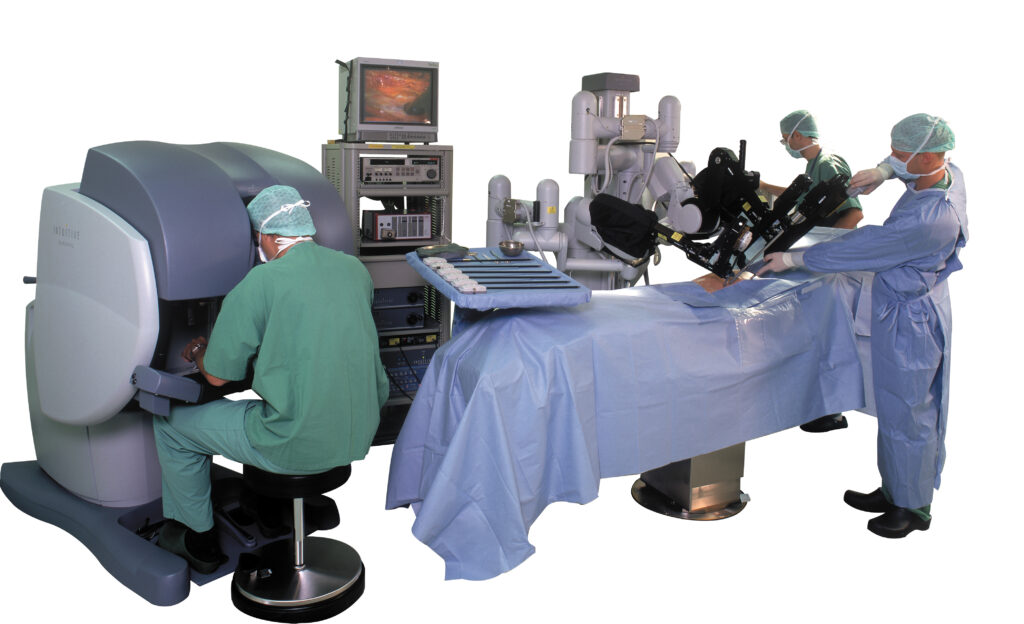Bladder Robotic Surgery
- Home
- Bladder Robotic Surgery

- Robotic surgical systems have thrust minimally invasive surgical options into a new era.
For years, surgeons and urologic oncologists have relied on the minimally invasive, nerve-sparing virtues of the procedure known as laparoscopic cystectomy to offer their patients the most effective treatment for bladder cancer. Not long ago, all cystectomies were performed using an open surgical procedure in which notable tissue and nerve damage, significant blood loss, and an increased risk of post-operative infections and complications were common.
Robotic cystectomy is simply a newer, more effective, minimally invasive surgical method for bladder cancer. This procedure utilizes the da Vinci Surgical System in which a robotic arm imitates the surgeon’s movements, amplifying their precision. It offers bladder cancer patients the prospect of a more effective surgery and less problematic post-surgical recovery. It is fast becoming the preferred answer for bladder cancer surgery. This surgical procedure allows the surgeon to make smaller incisions which spare vital, but delicate, nerve and muscle tissue. The patient experiences a shorter hospital stay, fewer complications, and a faster recovery time.
- Benefits of Robotic-Assisted Cystectomy
- Minimal damage to vital muscle and delicate nerve tissue as a result of the surgery
- A shorter hospital stay and an even faster return to a normal level of activity.
- Fewer noticeable scars.
- Minimized risk of blood loss.
- Minimized chances of post-operative infections.
- Minimized chances of post-operative incontinence or impotence.
- Minimized chances of other complications commonly associated with cystectomy.
- Minimal post-operative pain and discomfort.
- The unprecedented technology of the da Vinci Surgical System which offer surgeons, oncologists and urologists a high-definition, three-dimensional view of the procedure, as well as the assistance of the robot in suturin

